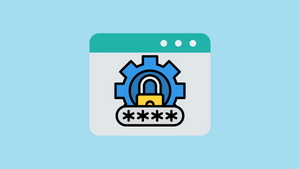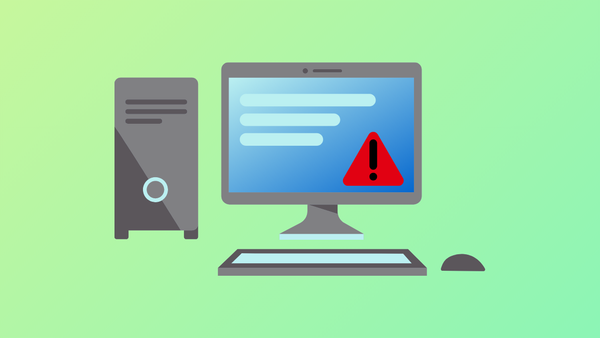In today's digital landscape, safeguarding your personal information is more crucial than ever. With tech giants like Microsoft continuously gathering data on user behavior, it's essential to know how to protect your privacy while using Windows 11. This guide will walk you through various settings and adjustments you can make to enhance your privacy on your Windows 11 device.
Customizing Privacy Settings in Windows 11
Below are several privacy settings you can modify to better protect your personal information on Windows 11.
1. App Permissions
App permissions allow you to control which applications have access to sensitive system resources such as your camera, microphone, location, contacts, and more. Adjusting these settings ensures that only trusted apps can access critical data.
Change Camera and Microphone Permissions
Unauthorized access to your camera and microphone can pose significant privacy risks. To prevent apps from using these devices without your consent, you can modify their permissions.
Step 1: Open the Settings app by pressing Windows + I. Navigate to the 'Privacy & security' section.

Step 2: Scroll down to the 'App permissions' section and select 'Camera'.

Step 3: To completely disable camera access, turn off the 'Camera access' toggle.

Step 4: If you prefer to allow certain apps to use the camera, keep 'Camera access' enabled. Then, individually disable camera access for apps you don't trust by toggling them off in the list below.

Step 5: Repeat the same steps for the microphone by selecting 'Microphone' under 'App permissions' and adjusting the settings accordingly.

Disable Location Tracking
Windows and certain apps use your location to provide location-based services like local weather updates and map directions. If you'd rather keep your location private, you can turn off location tracking.
Step 1: In the 'Privacy & security' settings, select 'Location' under 'App permissions'.

Step 2: To disable location tracking entirely, switch off the 'Location services' toggle. Confirm by clicking 'Turn off' in the prompt.

Step 3: If you want Windows to retain the ability to locate your device in case it's lost or stolen, leave 'Location services' on but disable 'Let apps access your location'. This restricts apps from accessing your location while still allowing Windows to track your device.

Step 4: For apps that require location access to function correctly, like Maps or Weather, enable 'Let apps access your location' and then individually grant permission to trusted apps.
Step 5: Toggle off location access for any apps that do not need this permission.

Manage Account Info Permission
You can control which apps have access to your account information such as your name and picture.
Step 1: In 'Privacy & security', select 'Account info' under 'App permissions'.

Step 2: Review the list of apps and disable access for any that don't require this permission.

Adjust Calendar, Contact, Phone Calls, and Messaging Permissions
These permissions determine whether apps can access your calendar events, contacts, phone calls, and messages. It's important to limit access to only those apps that genuinely need it.
Step 1: Under 'App permissions', select each category—'Calendar', 'Contacts', 'Phone calls', and 'Messaging'—one at a time.

Step 2: For each category, toggle off permissions for apps that shouldn't have access. For example, in 'Contacts', disable access for unnecessary apps.

Manage Library Folders Permissions
You can specify which apps have access to your library folders such as Documents, Downloads, Music, Pictures, and Videos.
Step 1: In 'Privacy & security', navigate to each library folder under 'App permissions', like 'Documents' or 'Pictures'.

Step 2: Adjust the settings to control app access to each folder as needed.
2. Disable Diagnostics and Feedback
Windows 11 collects diagnostic data to improve user experience, but this includes information about websites you visit and apps you use. You can limit the data sent to Microsoft.
Step 1: Right-click the Start menu and select 'Settings'.

Step 2: Go to 'Privacy & security' and click on 'Diagnostics & feedback'.

Step 3: Turn off 'Send optional diagnostic data'.

Step 4: Also, disable 'Improve inking and typing', 'Tailored experiences', and 'View diagnostic data' to prevent additional data collection.

3. Turn Off Ad Tracking
Windows 11 uses an advertising ID to serve personalized ads by collecting data on your app usage and browsing habits. You can turn this off to enhance your privacy.
Step 1: In 'Settings', go to 'Privacy & security' and select 'General'.

Step 2: Disable the 'Let apps show me personalized ads by using my advertising ID' option.

4. Turn Off Activity History
Activity History logs your actions on your device to provide personalized experiences. If you prefer to keep your activities private, you can disable this feature.
Step 1: In 'Privacy & security', click on 'Activity history'.

Step 2: Turn off 'Save my activity history on this device'.

5. Manage Search Permissions
Search permissions control the content displayed in Windows Search and whether it includes data from other Microsoft services.
Step 1: In 'Privacy & security', select 'Search permissions'.

Step 2: Under 'SafeSearch', choose the level of content filtering you prefer: 'Strict', 'Moderate', or 'Off'.

Step 3: To limit search results to your device only, turn off the toggles under 'Cloud content search' for both 'Microsoft account' and 'Work or school account'.

Step 4: In the 'History' section, disable 'Search history on this device' to prevent Windows from storing your search history locally.

6. Exclude Folders from Windows Search
If you have sensitive files or folders you'd like to keep out of Windows Search results, you can exclude them.
Step 1: Go to 'Settings' > 'Privacy & security' and click on 'Searching Windows'.

Step 2: Scroll down to 'Excluded folders' and click on 'Add an excluded folder'.

Step 3: Navigate to the folder you want to exclude and click 'Select Folder'.

7. Turn Off Online Speech Recognition
When enabled, Online Speech Recognition sends your voice data to Microsoft servers to improve speech recognition services. If you don't use voice features, you can disable this setting.
Step 1: In 'Privacy & security', select 'Speech' under 'Windows permissions'.
Step 2: Toggle off 'Online speech recognition'.
8. Switch to a Local Account
Using a local account instead of a Microsoft account enhances privacy by keeping your data stored locally rather than in the cloud.
Step 1: Open 'Settings' and go to 'Accounts'. If you haven't already, create a new local account. For better protection, make it an Administrator account.

Step 2: To change your account type, click on 'Other users' and select the account you've just created.

Step 3: Click on 'Change account type' and select 'Administrator' from the dropdown menu. Click 'OK'.

Step 4: To switch your current Microsoft account to a local account, go to 'Your info' under 'Accounts' and click on 'Sign in with a local account instead'.

Step 5: Follow the on-screen instructions to set up your local account, including creating a username and password.

Step 6: Click 'Sign out and finish' to complete the process.

9. Disable Shared Experiences
Shared Experiences syncs your app settings across devices. Disabling it prevents your data from being sent to the cloud.
Step 1: Open 'Settings', go to 'Apps', and select 'Advanced app settings'.
Step 2: Click on 'Share across devices'.
Step 3: Turn off the sharing feature by selecting 'Off'.

10. Enable Encrypted DNS
Encrypting your DNS queries enhances privacy by preventing third parties from monitoring your browsing activity.
Step 1: In 'Settings', go to 'Network & internet' and click on your primary network connection.
Step 2: Click on 'Hardware properties'.
Step 3: Next to 'DNS server assignment', click 'Edit'.

Step 4: Choose 'Manual' from the dropdown menu and enable 'IPv4'.

Step 5: Enter the preferred DNS addresses (e.g., Google's DNS: 8.8.8.8 and 8.8.4.4) in the 'Preferred DNS' and 'Alternate DNS' fields.

Step 6: Set 'DNS over HTTPS' to 'On (automatic template)' for both DNS entries.

Step 7: Repeat the process for 'IPv6' if necessary, using appropriate IPv6 DNS addresses.

Step 8: Click 'Save' to apply the settings.

11. Remove Recommended Start Menu Items
The 'Recommended' section in the Start menu shows recently used apps and files, which could reveal your activity to others using your device.
Step 1: Open 'Settings' and select 'Personalization'. Click on 'Start'.

Step 2: Turn off 'Show recently added apps' and 'Show recently opened items in Start, Jump Lists, and File Explorer'.

12. Stop Using OneDrive
If you're concerned about cloud storage privacy, you can unlink OneDrive from your device.
Step 1: Click on the OneDrive icon in the system tray. If it's not visible, open OneDrive from the Start menu.

Step 2: Click the gear icon and select 'Settings'.

Step 3: In the 'Account' tab, click 'Unlink this PC' and confirm by clicking 'Unlink account'.

Step 4: Consider using local backup solutions like Windows Backup and Restore or File History for your data.
13. Clear Your Microsoft Cloud Data
Even after adjusting settings, Microsoft may retain data in the cloud. You can delete this data from your Microsoft account.
Step 1: Visit the Microsoft Privacy Dashboard and sign in with your Microsoft account.

Step 2: Navigate to the 'Privacy' tab.

Step 3: Expand each category like 'Location activity', 'Browsing history', 'Search history', 'App and service activity', and 'App and service performance data'. Click 'Clear' to delete the data in each category.

14. Disable Clipboard Syncing
Clipboard syncing shares your copied content across devices, which may include sensitive information.
Step 1: Open 'Settings', select 'System', and click on 'Clipboard'.

Step 2: Turn off 'Sync across your devices'.

15. Use a VPN Connection
Utilizing a VPN encrypts your internet connection, enhancing privacy and security by masking your IP address and preventing data interception.
Step 1: Choose a reputable VPN service that meets your privacy needs.
Step 2: Install the VPN application on your Windows 11 device.
Step 3: Connect to the VPN server to encrypt your internet traffic and protect your online activities.
By taking these steps, you can significantly enhance your privacy while using Windows 11. While it's challenging to achieve complete privacy in the digital age, these measures will help you maintain greater control over your personal information.











Member discussion